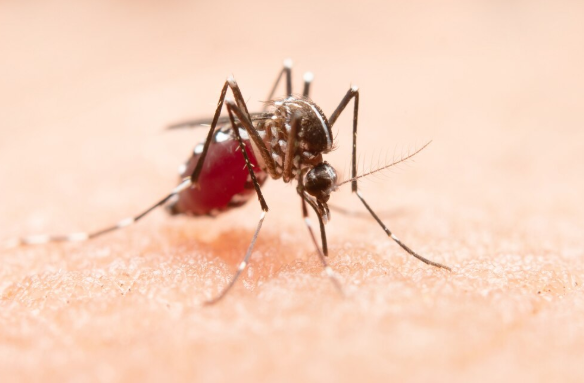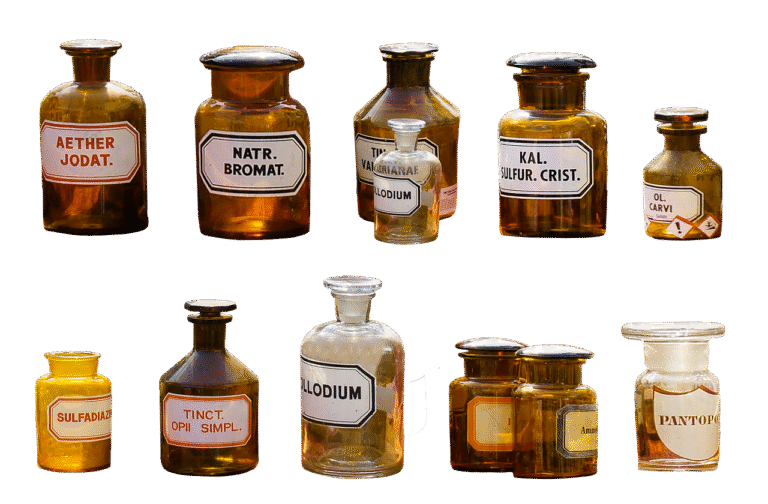HEK293 Cells: A Powerful Tool for Genetic and Pharmaceutical Research
HEK293 cells are super important for medical research. Scientists use these cells, which come from human kidney tissue, to study genes, make new medicines, and learn more about how our bodies work. These cells are used a lot in labs to study genes, find new drugs, and make proteins. They’ve changed the way scientists do research and develop new treatments. In this article, we’ll explore what makes HEK293 cells special, where they came from, how they’re used, and why they’re so important for science and medicine.
Key Takeaways
| Aspect | Details |
| Origin | Derived from human embryonic kidney cells in 1973 |
| Key Characteristics | Rapid growth, high transfection efficiency, versatile culture conditions |
| Primary Applications | Genetic engineering, drug development, protein production, toxicology studies |
| Advantages | Easy to culture, produce human-like proteins, adaptable to various research needs |
| Ethical Considerations | Derived from fetal tissue, raising some ethical debates |
| Future Potential | Crucial in personalized medicine, gene therapy, and synthetic biology advancements |
The Origins and Characteristics of HEK293 Cells
HEK293 cells were first created in 1973 by scientist Frank Graham in the Netherlands. These cells were made by changing human embryonic kidney cells with parts of a virus. This change gave the cells special features that make them very useful for research. The “293” in their name comes from Graham’s 293rd experiment, showing how much work went into making them. This discovery led to a type of cell that’s now used in labs all over the world.
HEK293 cells have some unique traits:
- They grow quickly, doubling in number every 34-36 hours, allowing for rapid experimental turnaround
- They’re easy to put new genes into (high transfection efficiency), making them ideal for genetic manipulation studies
- They can grow both stuck to surfaces (adherent) and floating in liquid (suspension), providing flexibility in culture methods
- They can make complex human proteins correctly, including post-translational modifications
- They have a relatively stable genome, ensuring consistency across experiments
- They are adaptable to serum-free growth conditions, which is crucial for certain pharmaceutical applications
These features make HEK293 cells a favorite choice for many types of scientific studies. They’re especially good at making proteins that scientists want to study or use as medicines. Their ability to produce human-like proteins in large amounts has been really important for making new medicines and studying how proteins interact in human cells.
Key Applications of HEK293 Cells in Research
1. Genetic Engineering and CRISPR Studies
HEK293 cells are like a blank canvas for scientists studying genes. They use these cells to learn how genes work and to test new ways of changing DNA. One exciting area is CRISPR, a tool that lets researchers edit genes very precisely. HEK293 cells are great for CRISPR experiments because they’re easy to work with and show results quickly. Scientists can easily put the CRISPR tools into these cells, making them perfect for figuring out the best ways to edit genes.
These cells help scientists:
- Find out what different genes do by making them work more or less
- Test new gene therapies before trying them in more complex systems
- Create special cell lines to study diseases
- See how changes in genes affect how cells work and make proteins
- Develop better ways to edit genes that could help treat genetic diseases
HEK293 cells are really important for making gene therapies, where scientists change genes to treat or prevent diseases. These cells can make large amounts of the special viruses used in gene therapy, which is crucial for this new and exciting type of medicine.
2. Biopharmaceutical and Vaccine Development
HEK293 cells are stars in making new medicines and vaccines. They can produce human proteins that are just right for our bodies, folded correctly and with all the right modifications. This makes them great for creating:
- Antibodies to fight diseases, including special antibodies used to treat cancer
- Proteins to replace ones that are missing in some illnesses, like the proteins that help blood clot in people with hemophilia
- Parts of vaccines, like those used against COVID-19, where HEK293 cells were really important in making and testing the vaccine
- Special proteins used as medicines for various treatments, from replacing hormones to helping with enzyme problems
- Special viruses used for gene therapy and delivering vaccines
Using HEK293 cells to make medicines has changed the whole industry. Their ability to make complex human proteins in large amounts has helped create biologics, a type of medicine that includes many of the newest and most effective treatments for various diseases. This has been especially important in responding quickly to new health threats, like during the COVID-19 pandemic.
Vaccine Production
HEK293 cells are used to produce components of vaccines, including those for COVID-19
Monoclonal Antibodies
These cells help create antibodies to fight various diseases
Therapeutic Proteins
HEK293 cells produce human proteins to replace those missing in certain illnesses
3. Drug Testing and Toxicology Studies
Before a new medicine can help people, it needs to be tested to make sure it’s safe. HEK293 cells play a big role in this process. Scientists use these cells to:
- See how drugs affect human cells at a very small level
- Check if medicines might be harmful by looking at how the cells react to different substances
- Understand how drugs work in the body, including what they do and what side effects they might have
- Study how drugs are broken down in the body and how they interact with proteins in cells
- Develop ways to test many drug candidates quickly
This testing helps researchers decide which drugs are safe to try in human trials. It’s an important step in creating new treatments for diseases. Using HEK293 cells in these early stages of making new drugs can save a lot of time and money. Because these cells come from humans, they can give good hints about how drugs might work in people, which might not be clear when testing in animal cells or animals themselves.
4. Neuroscience and Signal Transduction Research
Even though HEK293 cells come from kidney cells, they have some features that make them useful for brain research. They’re easy to change genetically and can make human proteins, which makes them great for studying how the brain works. Scientists use them to study:
- How nerve cells send signals, including how receptors and channels in the cell work
- How the brain responds to drugs, especially medicines for mental health
- Proteins involved in brain diseases, like the proteins that build up in Alzheimer’s disease
- How cells send signals to each other, which is important for how brain cells work and develop
- What happens when genes linked to brain disorders have changes in them
This research helps in making new treatments for conditions like Alzheimer’s disease, Parkinson’s disease, and depression. HEK293 cells provide a controlled environment where scientists can look at specific parts of how brain cells work in detail. This has led to big improvements in our understanding of how the brain works and has opened up new ways to treat brain disorders.
Ethical Considerations and Limitations
While HEK293 cells are incredibly useful, their use does raise some ethical questions. The original cells came from a fetus, which makes some people uncomfortable. This has led to debates about whether it’s right to use these cells in research and medicine. Scientists and ethicists are always talking about the best way to use these cells, trying to balance their huge value for science with ethical concerns.
There are also some limitations to using HEK293 cells:
- They’re not exactly the same as normal human cells, as they’ve been changed and grown in labs for a long time
- They can change over time if grown for too long, which might affect research results
- They might not always act like the specific cell types scientists are studying, especially when used to study very specialized cells
- Their cancer-like properties, while useful for research, might not accurately show how normal cells behave in all cases
- The presence of viral DNA from when they were first created could potentially affect some experiments
Researchers must carefully think about these ethical and practical issues when planning their experiments. It’s important to check findings in other systems and to be clear about using HEK293 cells in research papers and when developing medical products. Despite these concerns, most scientists recognize how valuable these cells have been for medical research and their potential to keep driving scientific progress.
The Future of HEK293 Cells in Biotechnology
The story of HEK293 cells is far from over. As biotechnology advances, these cells continue to find new uses and remain at the forefront of scientific innovation. Scientists are finding new ways to use these cells every day, pushing the boundaries of what’s possible in biomedical research and developing new treatments. Some exciting future applications include:
- Creating artificial organs for transplants, where HEK293 cells could be used as a base for growing complex tissues
- Developing personalized medicines, using HEK293 cells to test how drugs might work for different people based on their genes
- Improving gene therapy techniques, with HEK293 cells playing a big role in making the tools needed for these therapies
- Advancing synthetic biology, where these cells could be engineered to make new biological molecules or do specific jobs
- Enhancing our understanding of how genes are controlled through large-scale studies
- Developing new ways to fight emerging infectious diseases, using the cells’ ability to produce viral proteins and antibodies
HEK293 Cells
Synthetic Biology
Regenerative Medicine
Personalized Therapies
Advanced Drug Discovery
Gene Therapy Innovations
As technology gets better, HEK293 cells will likely play an even bigger role in solving health problems and pushing the limits of what’s possible in medicine. Their ability to adapt and all we’ve learned about how they work make them really valuable for tackling future scientific challenges. As we get better at editing genes and growing cells in labs, HEK293 cells will become even more useful for research and making new biotechnology products.
Conclusion
HEK293 cells have come a long way since they were first discovered in 1973. They’ve become a crucial tool in genetic and pharmaceutical research, helping scientists make big breakthroughs in medicine, biotechnology, and our understanding of how the human body works. From their humble beginnings in a lab in the Netherlands to now being a cornerstone of biomedical research, these cells have consistently shown their worth in advancing scientific knowledge and developing life-saving treatments.
While there are ethical things to think about, the potential benefits of research using HEK293 cells are huge. Scientists continue to talk about these ethical questions, trying to balance the great value of these cells with doing research responsibly. This ongoing conversation is important to make sure that using HEK293 cells stays in line with what society values and what’s considered ethical.
Looking to the future, these versatile cells will keep being at the forefront of scientific discovery. From making new vaccines to unlocking the secrets of our genes, HEK293 cells are helping to shape the future of medicine and biotechnology. Their story shows how one scientific discovery can have a big and lasting impact on human health and knowledge.
The future of studying cells looks bright, and HEK293 cells will definitely play a big role in the exciting developments to come. As we face new health challenges and try to understand the complexities of human biology, these amazing cells will continue to be a valuable tool for scientists. Their legacy inspires future researchers, showing how one scientific advance can change entire fields of study and improve countless lives.





